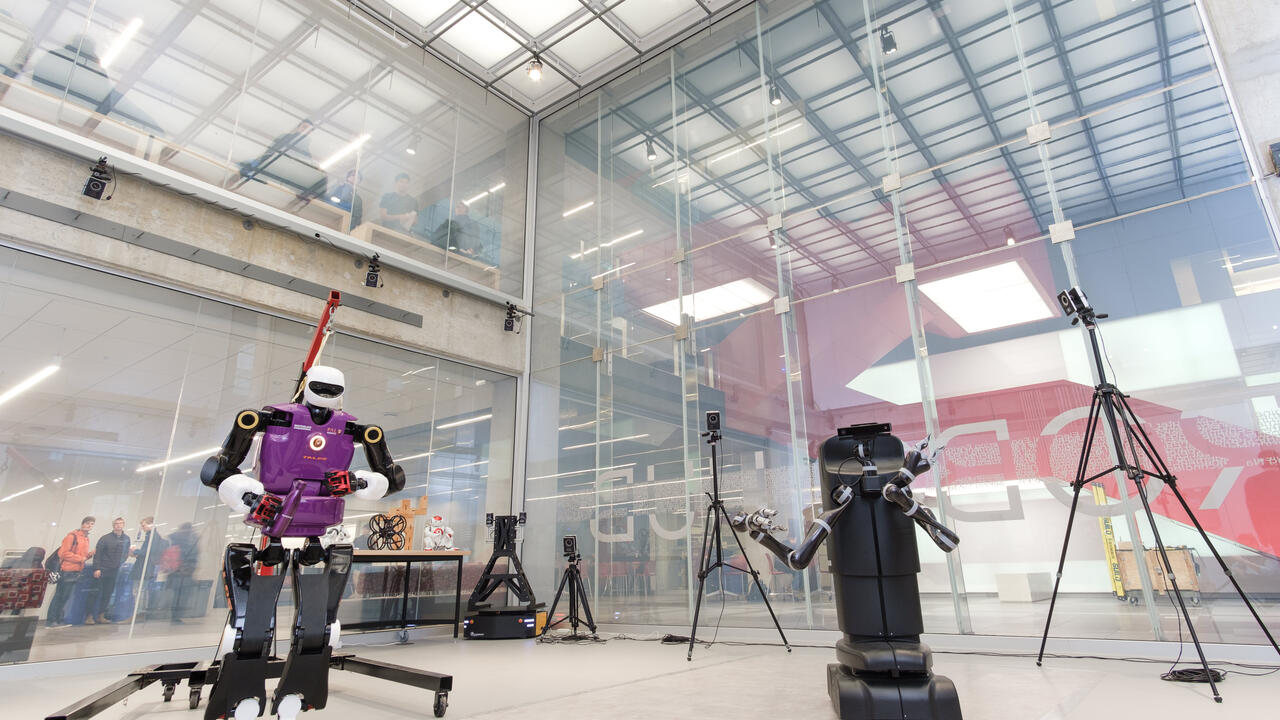
New research chair aims to develop human-centred robots
International robotics expert Katja Mombaur is coming to Waterloo Engineering from her native Germany

International robotics expert Katja Mombaur is coming to Waterloo Engineering from her native Germany
By Brian Caldwell Faculty of EngineeringAn international robotics expert from Germany is joining the University of Waterloo to lead a multidisciplinary research program backed by $10 million in funding from the federal government.
 Katja Mombaur, now a professor at Heidelberg University, will take up the new post in March following her appointment to a prestigious Canada Excellence Research Chair (CERC) in Human-Centred Robotics and Machine Intelligence.
Katja Mombaur, now a professor at Heidelberg University, will take up the new post in March following her appointment to a prestigious Canada Excellence Research Chair (CERC) in Human-Centred Robotics and Machine Intelligence.
She is one of eight new chairs named today by Kirsty Duncan, the Minister of Science and Sport, under a government program to attract world-renowned researchers and their teams to Canadian universities.
Five of the eight appointees, who work in areas including the precision design of cancer drugs and Arctic ice and climate change, are women. In addition to Germany, they come from as far away as Denmark, Greece and Finland.
“This talented and diverse group of research leaders is an excellent example of how when we bring together new points of view, we make science and research stronger,” Duncan said.
As a cross-appointed professor of systems design engineering and mechanical and mechatronics engineering at Waterloo, Mombaur will collaborate with colleagues in diverse fields including engineering, mathematics, health and cognitive sciences, philosophy and ethics.
“The idea is to bring all of them together to develop human-centred technology that will be accepted by society and improve our quality of life - and I think this will be a great place to do that,” she said. “Waterloo Engineering is very famous for robotics, for artificial intelligence (AI), and there are so many people I can connect with.”
Federal funding over seven years will be augmented by more than $15 million in support from the University. Nine new faculty positions targeting robotics and AI will be created in mechatronics engineering, biomedical engineering and a new area in human-machine interaction.
“Professor Mombaur’s vision is completely aligned with our own, and represents a strategic investment in research excellence and cutting-edge technology, purposely designed to accommodate everyone and enrich all our lives,” said Feridun Hamdullahpur, president and vice-chancellor of Waterloo. “We eagerly anticipate bringing her to Canada to lead this ambitious research program.”
Questions at the heart of Mombaur’s work involving wearable and humanoid robots include how increasingly intelligent machines can operate safely and efficiently in a complex human world, and how they should behave in that world.
A mathematician as well as an engineer, she uses mathematical modeling to teach robots how to move and to design the best possible assistive devices, such as exoskeletons and prosthetic limbs, for the elderly and disabled.
Her research program will focus on what Mombaur calls “motion intelligence,” a particular kind of AI that incorporates understanding of human movement and anticipation of human actions.
“Teaching autonomous robots to walk and act safely and reliably extends the limits of technology,” she said. “It will allow them to assist humans with dangerous, tiring or repetitive tasks, to work remotely or hand-in-hand with human collaborators.”
Pearl Sullivan, the dean of Waterloo Engineering, said robotics in the 21st century will require the development of social robots, or intelligent machines capable of working alongside people and supporting the disabled.
“We have strategically built world-class infrastructure and expertise in the past five years to lead social robotics in North America,” she said. “Professor Mombaur and her research program will perfectly complement our strengths and advance our ambitious goals in this important field.”
Waterloo has the largest cluster of robotics expertise in Canada and last year opened the RoboHub, a state-of-the-art research, testing and training facility featuring TALOS - a full-size humanoid robot that is one of the most sophisticated of its kind in the world.
“I look forward to working with TALOS a lot,” said Mombaur, who cited the facility as a factor in her decision to leave her native Germany.
Prior to becoming a full professor in Heidelberg, where she heads a research group as well as a robotics lab, Mombaur did robotics research in South Korea and France.
Mombaur will be the third Canada Excellence Research Chair at Waterloo. Previously appointed were David Cory in the field of quantum information and Philippe Van Cappellen in ecohydrology.

Read more
New global impact rankings measure the social and economic impact universities are making in the world

Read more
Waterloo researcher uses sound and artificial intelligence technology to detect problems.

Read more
Students pursuing programs in science, technology, engineering or mathematics at the University of Waterloo recognized with $12,000 scholarships.
The University of Waterloo acknowledges that much of our work takes place on the traditional territory of the Neutral, Anishinaabeg, and Haudenosaunee peoples. Our main campus is situated on the Haldimand Tract, the land granted to the Six Nations that includes six miles on each side of the Grand River. Our active work toward reconciliation takes place across our campuses through research, learning, teaching, and community building, and is co-ordinated within the Office of Indigenous Relations.